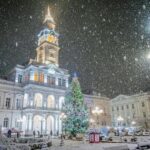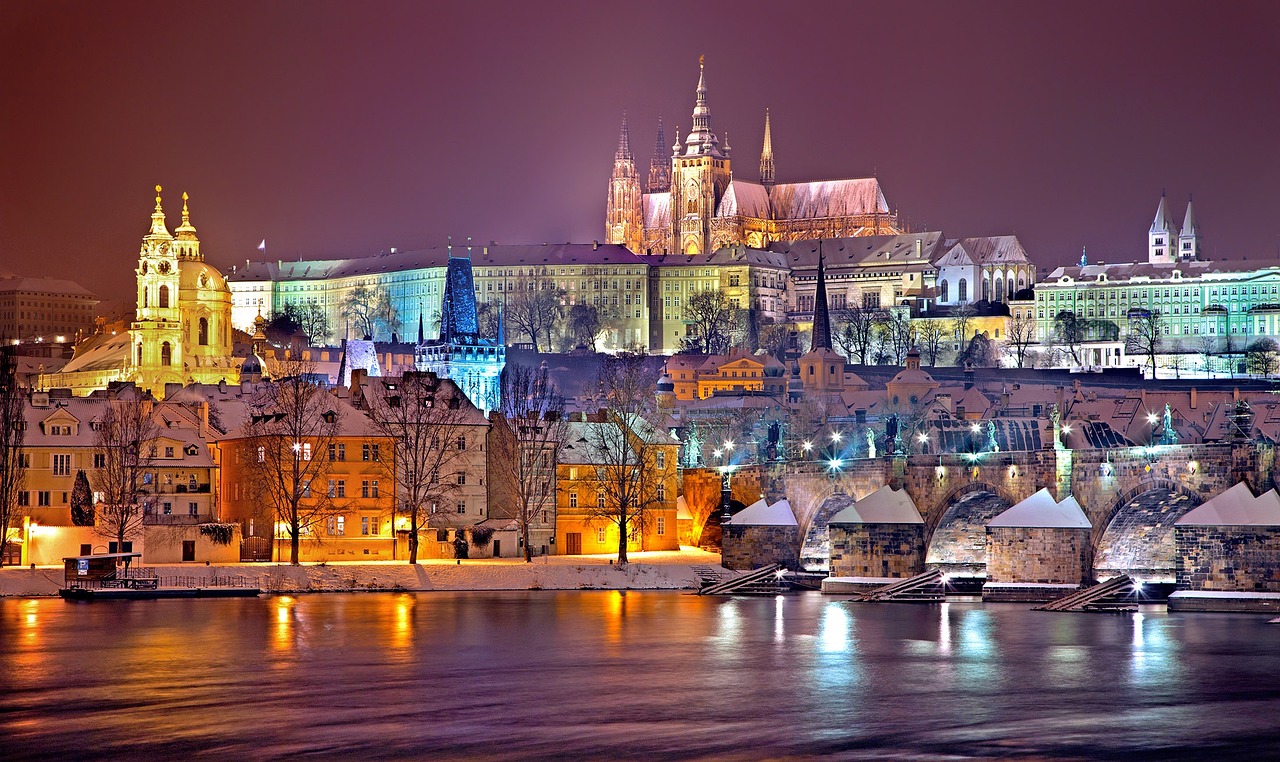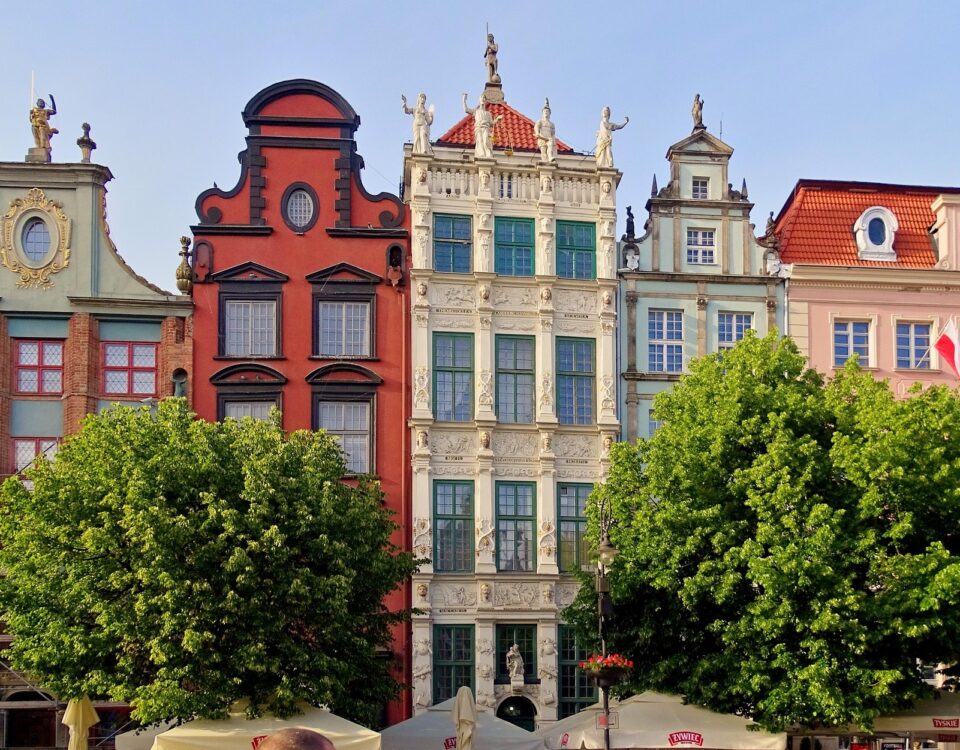
Christmas Markets in Eastern Europe: City by City
2025-11-09
Winter Sports Events in Eastern Europe | Top Competitions & Festivals 2025
2025-11-11Spring Awakens Eastern Europe:
Eastern Europe Spring Festivals are annual cultural events held across Poland, Hungary, Romania, the Czech Republic, Slovakia, Bulgaria, Serbia, and Croatia. These festivals include traditional crafts, folk music, dances, local cuisine, and seasonal celebrations that attract thousands of visitors every year

Best Time to Visit Eastern Europe in Spring | Festivals, Weather & Travel Tips
Top Eastern Europe Spring Festivals by Country
Spring festivals in Eastern Europe are deeply rooted in history. They blend pagan traditions, which honor nature and fertility, with Christian celebrations. For centuries, communities have gathered to celebrate the changing season, performing rituals, dances, and songs that symbolize renewal. These events foster a sense of belonging and cultural pride, and travelers can witness centuries-old customs still alive today
10 Incredible Eastern European Festivals You Can’t Miss

Famous Spring Festivals Across Eastern Europe
1.Poland – Easter Market and Spring Traditions
In Poland,Spring Festivals in Eastern Europe with the Marzanna festival, Easter markets, and flower parades. The Marzanna festival involves creating straw dolls representing winter and then burning or drowning them in rivers to welcome spring. During Easter, cities like Kraków host vibrant markets where visitors can admire intricately decorated eggs, taste traditional pastries like Mazurek, and participate in folk performances. Spring flower festivals also attract tourists to towns such as Zakopane, with colorful floral displays and music.
2.Hungary – Budapest Spring Festival and Folk Celebrations
Budapest hosts one of the largest Spring Festivals in Eastern Europe The Budapest Spring Festival is one of the largest cultural festivals in Eastern Europe, featuring classical music concerts, folk performances, and art exhibitions. Travelers can explore local crafts, sample Hungarian cuisine, and enjoy open-air concerts along the Danube River.Budapest comes alive during the Spring Festival, one of the largest cultural events in Eastern Europe. Street fairs offer goulash, chimney cake (Kürtőskalács), and local wines. Folk dance workshops allow tourists to participate in Hungarian “Csárdás” dances, creating a hands-on cultural experience that blends learning with entertainment.
3.Czech Republic – Easter Markets and Moravian Traditions
Prague and Moravia celebrate Spring Festivals in Eastern Europe with handcrafted wooden toys, folk dances, and traditional pastries like Vánočka Prague’s Easter markets combine spirituality with vibrant street life. Decorated eggs, handmade wooden toys, and local crafts fill the Old Town Square. Moravian towns like Olomouc host spring folk festivals featuring traditional costumes, dances, and music. Culinary delights include sweet pastries like Vánočka and spiced hot drinks. These events showcase the region’s unique heritage travel experiences, allowing visitors to connect
4.Romania – Mărțișor and Spring Celebrations
In Romania, Mărțișor marks the first day of March.marks Romania’s entry into the Spring Festivals in Eastern Europe, People exchange red-and-white trinkets symbolizing health and good fortune. The festival is accompanied by folk music, dance, and fairs selling handmade crafts. Cities like Sibiu and Brașov host theatrical performances, art exhibitions, and spring markets, offering tourists a comprehensive cultural immersion. Visitors can taste cozonac (sweet bread) and other traditional delicacies while enjoying performances that celebrate life, love, and renewal with centuries-old traditions.
5.Bulgaria – Kukeri Festival and Nestinarstvo Fire Dancing
The Kukeri Festival in Bulgaria is held in late winter and early spring, with participants wearing elaborate masks to chase away evil spirits. In coastal regions, the Nestinarstvo fire dancing tradition involves dancing barefoot on hot embers during ritual celebrations. These festivals combine spring traditions, folk music, and ceremonial dances, creating a magical and photogenic atmosphere for travelers.
6.Serbia, Slovakia, and Croatia – Regional Highlights
-
Serbia: The Vršac Wine and Spring Festival features grape harvest celebrations, folk performances, and culinary fairs. Traditional dances like Kolo bring communities together.
-
Slovakia: Easter egg decorating, folklore days, and craft workshops in towns like Bratislava and Levoča highlight Slovak traditions.
-
Croatia: Zagreb hosts flower parades, street concerts, and spring art exhibitions. In Rijeka, cultural weeks celebrate music, dance, and local cuisine
7.Slovakia – Easter Eggs and Folklore Days
-
Easter egg decorating competitions (Pisanki) in Bratislava and Levoča.
-
Folklore Days: April–May; regional costume shows, traditional dances, and music competitions.
-
Foods: Lokše (potato pancakes), bryndzové halušky (sheep cheese dumplings)
8.Croatia – Zagreb Flower Parade and Cultural Week
-
Flower Parade in Zagreb: April; features floral floats, folk music, and street performances.
-
Spring Cultural Week: May; concerts, exhibitions, and local gastronomy fairs.
-
Traditional foods: Kobasica (sausage), fritule (mini doughnuts), pastries
https://www.goaheadtours.com/travel-blog/articles/eastern-europe-in-spring?utm_source

Eastern Europe Spring Festivals Budapest folk dance
9.Local Cuisine During Spring Festivals in Eastern Europe
Food plays a central role in Eastern Europe cultural festivals. Traditional dishes such as Polish pierogi, Hungarian goulash, Czech pastries, Romanian cozonac, and Bulgarian banitsa connect visitors to local life.Spring Festivals in Eastern Europe are full of flavor and tradition Street markets and festival fairs often serve seasonal ingredients, including fresh spring vegetables, dairy products, and herbal drinks. Sampling these foods offers insight into regional culture and history.
10.Music, Dance, and Traditional Craft
Folk music and dance are inseparable from spring celebrations. Polish Krakowiak, Hungarian Csárdás, Romanian Hora, Bulgarian Horo, and Serbian Kolo create lively performances that engage locals and tourists alike. Craft workshops showcase embroidery, pottery, wood carving, and Easter egg painting, allowing travelers hands-on cultural participation. These festivals preserve Eastern Europe culture while offering visitors unforgettable interactive experiences.
Why Spring is the Best Time to Visit Eastern Europe
Spring offers mild weather, blooming landscapes, and vibrant festivals. Unlike crowded summer seasons, travelers can experience heritage travel more intimately. Flowering parks, historic towns, and river promenades provide scenic backdrops for festival photography. Early spring markets also offer seasonal crafts and products unavailable later in the year. For nature lovers and cultural explorers, spring is the ideal season in Eastern Europe.
Traveler Tips for Spring Festivals
-
Plan ahead: Spring festivals can attract large crowds, so book accommodations early.
-
Dress appropriately: Layered clothing, waterproof shoes, and hats are recommended.
-
Learn local phrases: Simple greetings enhance cultural engagement.
-
Carry cash: Many street markets do not accept cards.
-
Interact with locals: Conversations provide deeper insights into traditions and customs
Start exploring now 👉Best Time to Visit Eastern Europe: A Complete Season-by-Season
Data on Visitor Numbers and Economic ImpactFolk music and dance Eastern Europe
-
Kraków Easter Market: ~1 million visitors annually.
-
Budapest Spring Festival: ~500,000 visitors.
-
Economic contribution: Festivals generate millions of Euros via ticket sales, accommodation, local crafts, and food markets.
-
Cultural preservation: Festivals help maintain folk dances, music, and artisan skills
https://www.giltravel.com/blog/whats-the-best-time-to-visit-eastern-europe
Conclusion – Why Eastern Europe in Spring is Unforgettable
Spring in Eastern Europe is a celebration of life, culture, and history. From Poland’s colorful Easter markets to Hungary’s music-filled festivals, Romania’s Mărțișor traditions, and Bulgaria’s fiery dances, travelers can immerse themselves in centuries of heritage. Authentic experiences, local cuisine, folk music, and hands-on craft workshops create memories that linger long after the season ends. For those seeking cultural festivals, spring traditions, and heritage travel, Eastern Europe offers an unforgettable journey





